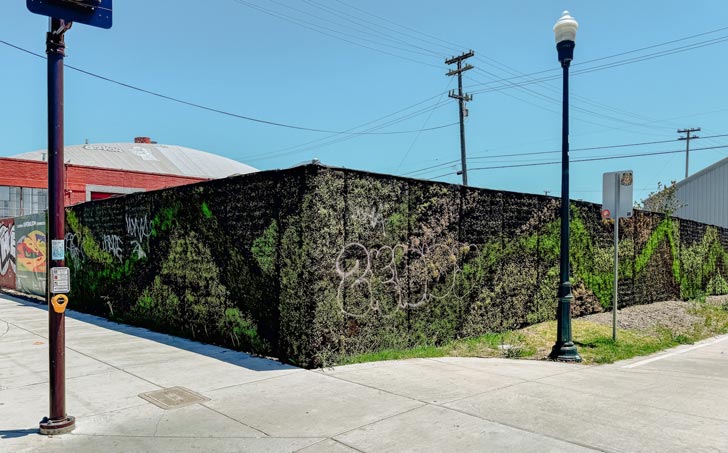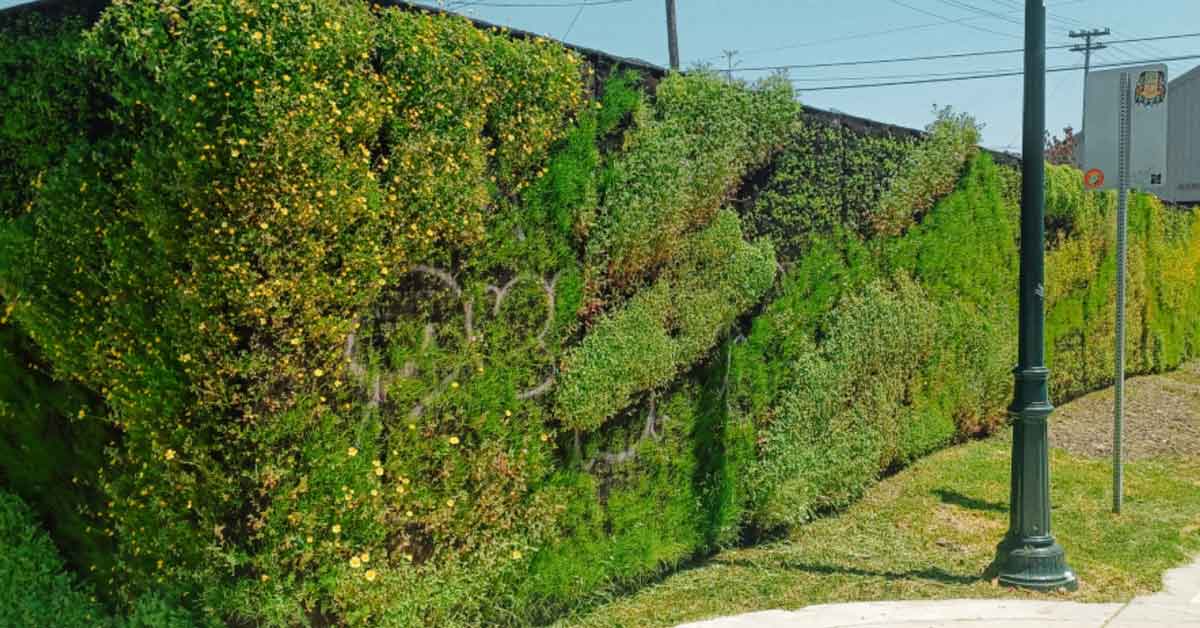Walk through any city in the United States, and you’ll find concrete walls and chain-link fences with privacy slats covered in spray-painted graffiti. Sometimes these quirks are a communal display of public art and creativity, but other times they’re just plain vulgar and disrespectful.
What if those walls could be transformed, instead, into a bountiful, bursting pollinator garden?
Company Habitat Horticulture developed the Meadowall for this very reason.

“Just down the street from Habitat Horticulture’s headquarters, a newly built fence along the greenway bike path was quickly covered in graffiti,” a statement from the company shared.
“Rather than let the wall become a lasting eyesore, we saw an opportunity to showcase the potential of Meadowall, our pre-seeded panel system designed to turn blank vertical surfaces into biodiverse meadows.”

The green wall system includes individual panels that are seeded with native wildflowers and grasses. It was easily installed atop the chain-link fence near the company’s Berkeley, California headquarters.
“As it grows, it transforms an ordinary walkway into a vertical meadow,” the brand shared in a social media video. “A vital connection to nature for people and pollinators alike.”
In total, Habitat Horticulture covered 1,500 square feet of fence with the Meadowall panels and saw a transformation within just weeks.

“The surface transformed into a living tapestry of seasonal color and texture — providing habitat for pollinators, filtering the air, and softening urban noise,” the company wrote on its website.
“What was once a target for graffiti is now a vibrant, dynamic landscape that engages passersby and demonstrates how even the most utilitarian surfaces can become ecological assets.”
Habitat Horticulture doesn’t just use the Meadowall for its own purposes, but installs these green walls in locations around the world.
While many clients install the Meadowalls in interior spaces, like office buildings or apartment lobbies, outdoor projects like those on college campuses, and on the exterior of an urban building in San Francisco’s Tenderloin neighborhood bring a green oasis to often plant-free spaces.

“Straddling the corner of the building, the wall appears almost like a sentient being, contrasting the angular architecture with lush, soft plantings,” a description for the Tenderloin design stated.
“As both an artistic statement and a tool for urban revitalization, the installation helps enliven the neighborhood while showing how thoughtful design and greenery can transform even the densest city spaces.”
The innovative approach isn’t just intended to beautify unsightly spaces. Cost-effective and requiring minimal maintenance, the Meadowall uses seeds instead of fully rooted plants, which costs roughly 30% less for installation.

It also provides habitats for local bees, birds, butterflies, and other pollinators, all while reducing sound from traffic and other noise pollution by an average of 15 decibels.
Lastly, the green walls trap particulate matter on the leaves of plants, which captures construction dust and filters out chemicals from car exhaust.
“Easy to install and maintain, Meadowall offers a sustainable, visually stunning way to enhance urban spaces, communicate environmental commitment, and deter graffiti,” Habitat Horticulture describes of the wall.
“Experience the beauty of nature with Meadowall, where every wall can become a blooming meadow.”
You may also like: Boston is the first US city to plant green roofs on bus stops: 'Would amount to 17 acres of green space'
Header image courtesy of Habitat Horticulture



